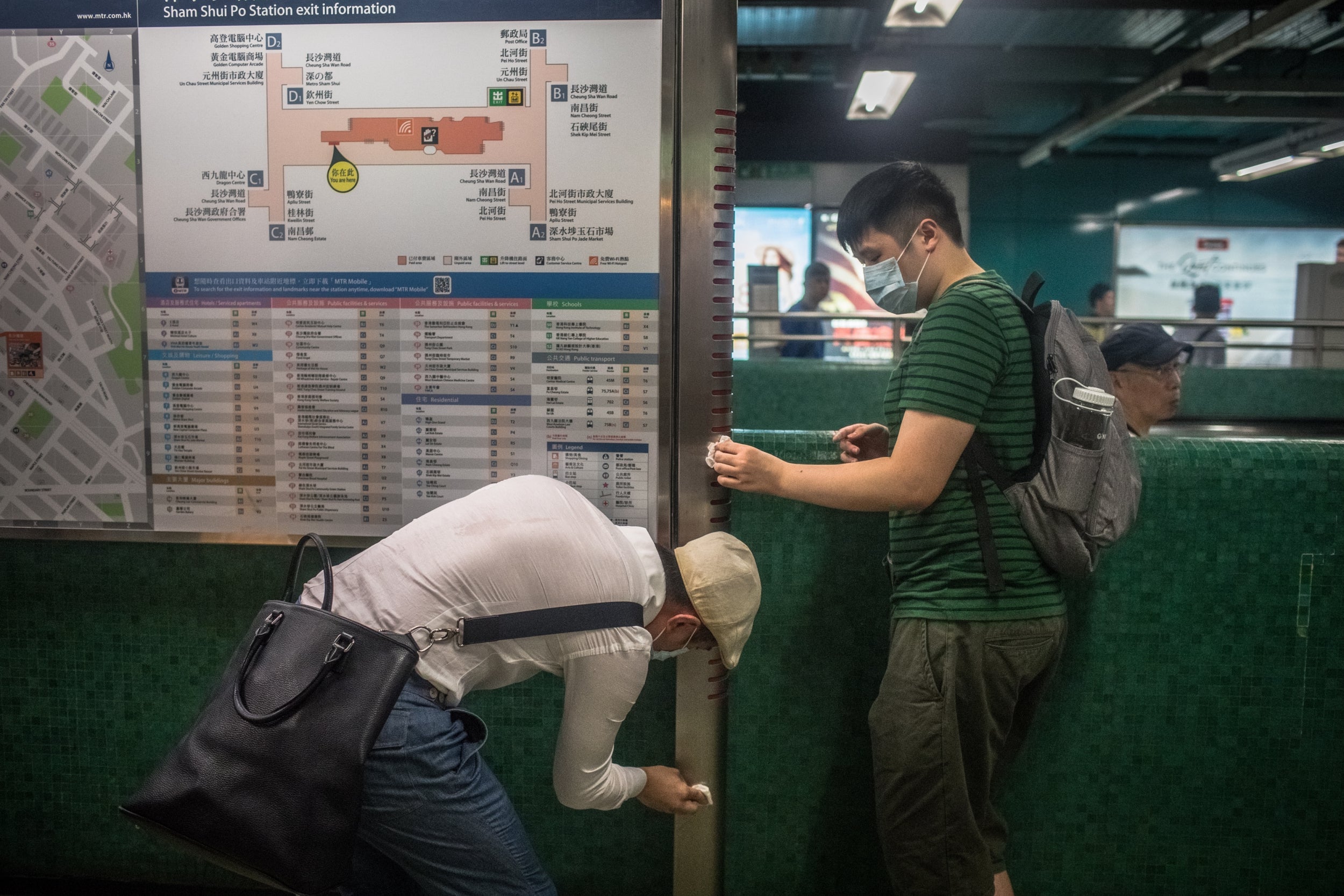Hong Kong protesters return to clean up after clashes at Sham Shui Po metro station
Protest movement fighting to retain public support after 11 weeks of increasingly violent clashes

Your support helps us to tell the story
From reproductive rights to climate change to Big Tech, The Independent is on the ground when the story is developing. Whether it's investigating the financials of Elon Musk's pro-Trump PAC or producing our latest documentary, 'The A Word', which shines a light on the American women fighting for reproductive rights, we know how important it is to parse out the facts from the messaging.
At such a critical moment in US history, we need reporters on the ground. Your donation allows us to keep sending journalists to speak to both sides of the story.
The Independent is trusted by Americans across the entire political spectrum. And unlike many other quality news outlets, we choose not to lock Americans out of our reporting and analysis with paywalls. We believe quality journalism should be available to everyone, paid for by those who can afford it.
Your support makes all the difference.Members of Hong Kong’s pro-democracy movement were filmed cleaning up at a metro station on Monday morning after it became the scene of clashes between protesters and police.
The volunteer cleaners turned up following an online call from protest organisers, who said the Sham Shui Po MTR station was still “contaminated” after police fired teargas canisters in the area on Thursday.
Footage posted online by Radio Television Hong Kong (RTHK) showed people with face masks, gloves and tissues or wet wipes getting rid of what they said was teargas residue.
At Monday morning’s clean-up, one volunteer identified only by his surname Chan told RTHK that he hoped the MTR Corporation would put pressure on the authorities to stop using inappropriate crowd control tactics around metro stations.
Other cleaners said it shouldn’t be up to them to “decontaminate” the facilities, and that industrial cleaning equipment was required. Similar scenes were also seen last Friday at the Kwai Fong MTR station, where volunteers said the station had not been thoroughly cleaned following another teargas volley.
The protest movement is fighting to retain public support after 11 weeks of increasingly violent clashes with the authorities have divided opinions on demonstrators’ tactics.
What started out as a series of marches against a controversial new extradition bill has spiralled into a broad-based movement against what many see as the erosion of Hong Kong’s autonomy.
And while police have been accused of using excessive force, the growing unrest has seen Beijing describe the protesters as “terrorist-like” and threaten to intervene directly if the situation is not brought under control.
If a rally on Sunday was anything to go by, the protest movement still retains remarkably widespread support. Despite heavy rain, organisers estimated 1.7 million people turned out in a peaceful march that was mostly limited by the authorities to the city’s Victoria Park.
Police confirmed the rally was mostly peaceful, with demonstrators dispersing on time in a break from other recent protests that were followed by violent clashes into the night.
Some incidents of breaches of the public peace did occur late on Sunday, police said, but these were limited to protesters throwing small stones at a government office and aiming laser beams at police officers.
There was a minimal police presence on Sunday and no arrests were made to add to the more than 700 people detained since the crisis began in June.
The government said in a statement on Sunday night it was important to restore social order as soon as possible and that it would begin talks with the public and “rebuild social harmony when everything has calmed down”.
Meanwhile, China kept up its hardened stance on the unrest, which has seen thousands of paramilitary personnel engaged in menacing “riot control” training exercises just across the border from Hong Kong in Shenzhen.
The Chinese Communist Party’s official People’s Daily newspaper warned again in an editorial on Monday that hostile foreign influences were inciting the protest movement.
It also said the protests carried the distinctive features of a “colour revolution”, a reference to popular uprisings in former Soviet states, such as Ukraine, that often swept long-established rulers from power.
And Beijing lashed out against the government of Taiwan, a self-ruled island that China considers its own territory, which offered last month to give political asylum to participants in Hong Kong’s protest movement.
Ma Xiaoguang, spokesman for the Chinese Cabinet’s Taiwan Affairs Office, said Taiwan’s offer would “cover up the crimes of a small group of violent militants” and encourage their “audacity in harming Hong Kong and turn Taiwan into a “heaven for ducking the law”.
Ma demanded that Taiwan’s government “cease undermining the rule of law” in Hong Kong, cease interfering in its affairs and not “condone criminals”.
More protests are planned this week in Hong Kong, including another strike in districts across the city.
Additional reporting by agencies
Join our commenting forum
Join thought-provoking conversations, follow other Independent readers and see their replies
Comments